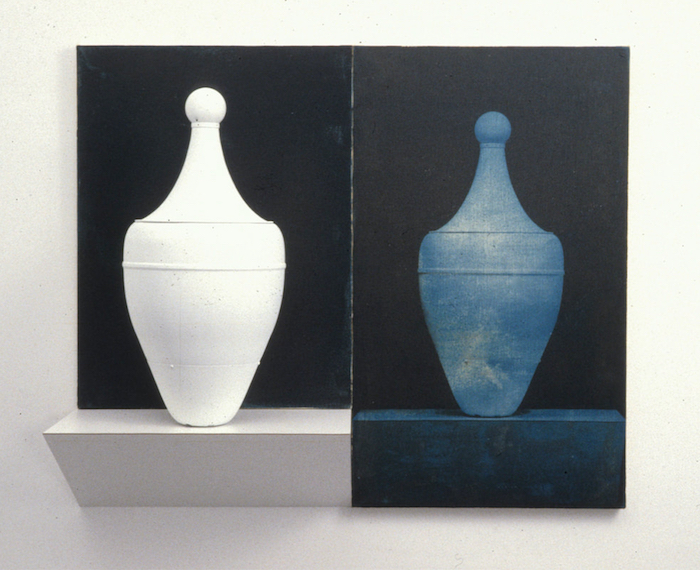
Opening Reception for the Exhibition of work by Steve Briscoe
https://thetransmissiongallery.com/steve-briscoe-the-object-is-the-subject.html
Advance Notice of Exhibition by Steve Briscoe at Transmission Gallery San Francisco.
EXHIBITION: The Object is The Subject: The Salesman’s Samples, 1987-1991,
an art exhibition of Sculpture and Photography by Steve Briscoe
DATES: February 17 through March 25, 2023.
Opening reception with the artist on Sunday, February 19, 2023, from 2-5 pm
GALLERY HOURS: Fridays, Saturdays, and Sundays, 1-6 pm and by appointment.
LOCATION: Transmission Gallery San Francisco, 35 Bartlett Street, San Francisco, CA 94110
CONTACT: Cameron Brian cell phone (510) 717-5516, sfgallery@thetransmissiongallery.com; TaVee Lee, cell phone (925) 917-4262
Transmission Gallery San Francisco is proud to present photographic/sculptural works by Steve Briscoe. In this exhibition we will be showing a selection of his Salesman’s Samples, a body of work from the late 1980s. Against the backdrop of a hot art market, artists were beginning to look at the presentation of art as the art itself. These works situate themselves in that milieu as a mashup of sculpture, photography, and even painting.
Working from the consumer detritus found at an Oakland “As-Is” yard, Briscoe assembled parts of lamps, planters, buckets, spheres, even a truck door and guitar, and photographed them in black and white. He then hand-printed a photographic image on a stretched canvas at 1:1 scale. The resulting photographs, flat, splotchy, even painterly, were paired with the original as a diptych, confronting the viewer with both versions for comparison. The eye goes back and forth. Which is “better?” What is gained or lost in the translation? There is a reference to portrait painting as well as still life.
The state of photography at the time was decidedly analog. These large-scale prints were not easy to make, and Briscoe developed a specialized technique so that the images could be developed on the stretched canvas. There was also an interest in the photograph as an object and alternative processes. Artists like the Starn twins were using photography in more conceptual ways. F.64 was out the door, making way for Neo-expressionism, Appropriation, and Semiotics!
Catalogs of the works on view as well as other bodies of work will be available at the gallery or the artist’s website, http://www.briscoestudio.com
Biography:
Born in Amarillo, Texas, Briscoe grew up in Stockton, CA. He studied with Sam Hernandez at Santa Clara University and later with Robert Hudson, Robert Rasmussen, and Carlos Villa at the San Francisco Art Institute. He came into his own with this body of work, which was shown at Dorothy Weiss Gallery, New Langton Arts, and the SFMOMA Artist’s Gallery. He was nominated for a SECA award and spent time in Omaha at the Bemis Foundation.
Works are in the collections of the Oakland Museum of California, the Berkeley Art Museum, and the diRosa Foundation, among others (CV available on request).
Retired now from a parallel career as a museum preparator, Briscoe lives with his wife, artist Lynn Beldner in Woodland, California.
The artist’s statement about the work and process:
The Salesman’s Sample series was an attempt to merge photography and sculpture. The objects have an ambiguous associative content and formal characteristics that are reflective of their sources–discarded commercial items. They have a somewhat anonymous appearance; product-like in their presentation. In the series, the objects ran the gamut from straight found objects to unpainted assemblages to monochrome cylindrical shapes that are clearly manmade.
The photographs are printed to scale on canvas and depict the objects. They flatten the sculpture’s volume and reduce its information to signage while raising it to icon status. The photographs are not cleanly printed, showing their process and manufacture. Not a seamless window, they are revealed as objects too–and painterly ones at that.
In contrast to Joseph Kosuth’s One and Three Chairs, where the point of the work is the circular reference of definitions, these handcrafted copies give us two originals that exist from the Platonic ideal – one visual, one corporeal, one document, one monument. It is this equation that makes the eyes dart back and forth looking for likeness or disparity; failure in one, success in the other.
(On a personal note, I used the title “Salesman’s Samples” because my grandfather was a traveling cutlery salesman in the central valley of California. He had sample cases with knives and scissors that I really admired as objects.)
The Process
The photographs in the Salesman’s Sample pieces are printed with a commercially available medium called Liquid Light. They are printed on a linen/cotton fabric. I used a slide projector to enlarge my negatives to the correct size. I developed a method of turning the stretched canvas into a tray by building a low box around the stretcher. In this way the photo surface was the bottom of the tray and allowed me to develop the image with normal processing chemicals. Some of the prints were selenium-toned to produce more staining or iron-toned for a blue color.

